
- Appointments
- Awards
- Books & Authors
- Committees
- Deaths
- Defence
- Economic
- Environment
- Finance
- Important Days
- International
- Miscellaneous
- National
- Persons in NEWS
- Places in NEWS
- Regional
- Reports
- Resignations & Retirements
- Science & Technology
- Sports
- April 2018 - Exams Resources
- Current Affairs - Quiz
- Current Affairs - Test
- Current Affairs - PDF
Current Affairs April 2018 - Finance
1 - First bi-monthly Statement of FY 2018-19 of the Monetary Policy Committee (MPC)

The Monetary Policy Committee (MPC) in its first bi-monthly Statement of 2018-19 has maintained all policy rates unchanged. MPC updated its real GDP growth and inflation projections for 2017-18 and 2018-19. The MPC revised upwards its forecast of real GDP growth from 7.2 % in its February 2018 Statement to 7.4 %, broadly in line with the forecast in the Economic Survey.
Inflation in Q4 2017-18 has been revised downwards from 5.1 % to 4.5 %. Further, the inflation forecast for H1 2018-19 has been revised downwards from 5.1% -5.6% to 4.4%-4.7%, and from 4.5%-4.6% to 4.4% in H2 2018-19.
2 - Jio Payments Bank Limited commenced operations
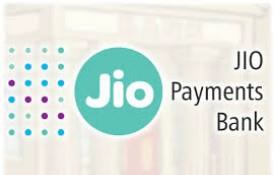
Jio Payments Bank Limited has commenced operations as a payments bank with effect from April 3, 2018. The Reserve Bank has issued a licence to the bank under Section 22 (1) of the Banking Regulation Act, 1949 to carry on the business of payments bank in India.
Reliance Industries Limited, Mumbai was one of the 11 applicants which were issued in-principle approval for setting up a payments bank. Payments bank provides small savings accounts and payments or remittance services.
3 - IndusInd Bank received RBI approval to acquire IL&FS arm
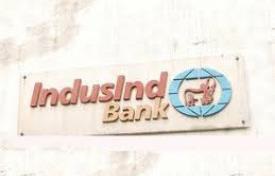
IndusInd Bank has received RBIs approval to buy the securities services arm of IL&FS. In March 2017, the bank entered an agreement with Infrastructure Leasing and Financial Services, the promoter shareholder of IL&FS Securities Services Ltd (ISSL), to acquire 100% stake in ISSL. The deal size was undisclosed.
ISSL was incorporated in FY 2007 as a subsidiary of IL&FS and ISSL is a leading Capital Market Intermediary for Professional Clearing, Depository and Custodial Services.
4 - SIDBI launched 'Samridhi - the virtual assistant' & 'Bankability Kit' on its Foundation day
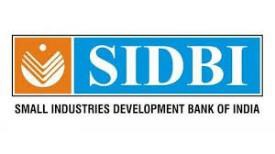
SIDBI celebrated its foundation day as day of Sampark (connect), Sanwad (interaction), Suraksha (security) and Sampreshan (disseminate). SIDBI launched Samridhhi- the virtual assistant on banks revamped universal loan portal www.udyamimitra.in. It will answer standard queries of aspirants 24*7.
The bank also launched a Bankability Kit (brought in partnership with Bank of Baroda and IDBI Bank). It covers what bankers look at, how to communicate with banks, the care to be taken, dos and donts etc.
5 - Jana Small Finance Bank Limited commenced operations

Jana Small Finance Bank Limited has commenced operations as a small finance bank with effect from March 28, 2018. The Reserve Bank has issued a licence to the bank under Section 22 (1) of the Banking Regulation Act, 1949 to carry on the business of small finance bank in India.
Janalakshmi Financial Services Private Limited, Bengaluru was one of the ten applicants which were issued in-principle approval for setting up a small finance bank.
6 - RBI Changed Methodology for Bond Valuation to Check Manipulation
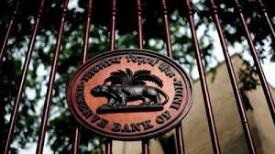
The Reserve Bank of India has changed the methodology used by debt market players, including banks and primary dealers, for valuation of bonds. The move is aimed to prevent the possibility of manipulation in the prices of securities, especially government securities (G-Secs).
Henceforth, security/bond valuation will be based on the weighted average price of the last half-an-hour of trading on the last trading day of every quarter against the last traded price earlier.
7 - Insolvency and Bankruptcy Board of India signed MoU with the Indian Institute of Corporate Affair
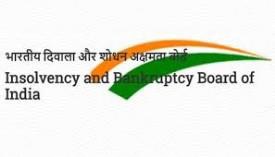
The Insolvency and Bankruptcy Board of India (IBBI) signed a MoU with the Indian Institute of Corporate Affairs (IICA) to collaborate for research and publication, advancement of knowledge, capacity building, awareness and advocacy initiatives among others and to undertake research and publication for further strengthening the insolvency and bankruptcy framework.
The Insolvency and Bankruptcy Code, 2016 (Code) provides for reorganisation and insolvency resolution of corporate persons, partnership firms and individuals in a time bound manner for maximization of the value of assets of such persons.
8 - FPI investment limit in government securities reviewed by RBI
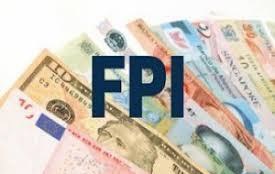
The Reserve Bank of India, in consultation with the Government revised the foreign portfolio investors (FPI) investment limit in Central government securities (G-Sec).
The limit for FPI investment in Central Government securities (G-secs) would be increased by 0.5% each year to 5.5% of outstanding stock of securities in 2018-19 and 6% of outstanding stock of securities in 2019-20. The limit for FPI investment in State Development Loans (SDLs) would remain unchanged at 2% of outstanding stock of securities. The overall limit for FPI investment in corporate bonds will be fixed at 9%.
9 - State bank of India to invest Rs 80 bn in hydropower project of Nepal
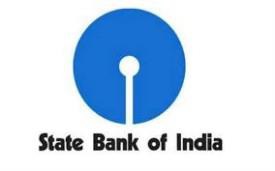
SBI decided to invest Rs 80 billion in Nepals hydropower project Arun III of Nepal. The project aims to generate 900 MW electricity. The project investment involves construction of the structures and transmission lines. This will benefit increase in production of 21.9% of the total electricity produced in a year i.e., 197 MW electricity with 86 crore unit for free in a year.
Punjab National Bank will finance a part of this production cost for the construction of the 268 km long 400 KV transmission line. The mega project is targeted to be completed by 2022.
10 - MoU signed between Indian Army and Axis Bank
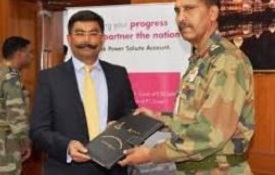
A Memorandum of Undertaking (MoU) was signed between the Indian Army and Axis Bank on the Defence Salary Package. The current MoU is tailor-made to suit the requirements of serving soldiers, pensioners and families.
Under the current MoU, apart from other benefits, the Army personnel will get free personal accident death cover and free permanent total disability cover of Rs 30 lakh and free educational cover of up to Rs 2 Lakh for children between the age of 12 and 20 years.
11 - 121 crores released towards co-contribution in Atal Pension Yojana
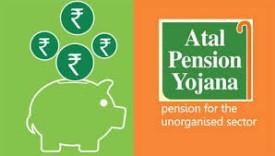
Atal Pension Yojana (APY) is being implemented through the APY Service Providers. The total number of subscribers registered under APY crossed 97.60 lakhs. The scheme provides for a co-contribution from Government of India. The Government of India through PFRDA has released co-contribution for the FY 2016-17 for nearly 14 lacs eligible subscribers amounting to Rs. 120.92 crores. Government of India co-contribution is payable only when accounts are regular.
Atal Pension Yojana provides minimum guaranteed pension ranging between Rs. 1000/- to Rs. 5000/- per month for the subscriber from the age of 60 years.
12 - IMF predicted India to grow at 7.4% in 2018

The International Monetary Fund predicted that India is expected to grow at 7.4% in 2018 and 7.8% in 2019 and would re-emerge as one of the fastest growing major economies in the period. The IMF explained this is due to the strong private consumption as well as fading transitory effects of the currency exchange initiative and implementation of the national goods and services tax.
According to the IMF, India has made progress on structural reforms in the recent past, which will help reduce internal barriers to trade, increase efficiency, and improve tax compliance.
13 - World Bank projected India's growth rate at 7.3% for 2018-19
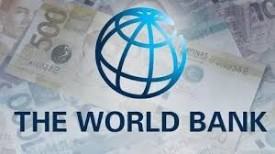
The World Bank projected a growth rate of 7.3% for 2018-19 and 7.5% for 2019-20. The bank also noted that Indian economy has recovered from the effects of demonetisation and the Goods and Services Tax.
The World Bank in its twice-a-year South Asia Economic Focus report in Washington stated that growth is expected to accelerate from 6.7 in 2017 to 7.3% in 2018 and to subsequently stabilise supported by a sustained recovery in private investment and private consumption. India should strive to accelerate investments and exports to take advantage of the recovery in global growth.
14 - IMF predicted global growth at 3.9% in next two years
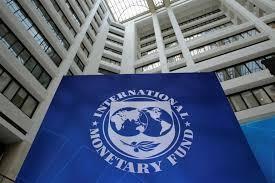
IMF projected a global growth of 3.9% in the next two years due to strong momentum, favourable market sentiment among other factors but warned that any trade disputes threaten to undermine confidence and derail global growth prematurely.
The IMF said in its latest World Economic Outlook report that the partial recovery in commodity prices should allow conditions for commodity exporters to gradually improve. The 3.9 per cent global growth forecast for 2018-19 is being borne out by continuing strong performance in the euro area, Japan, China, and the US, all of which grew above expectations last year.
15 - CII pegged India's GDP at 7.3-7.7% for 2018-19
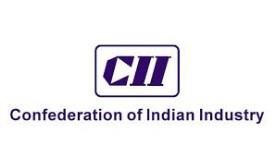
The Confederation of Indian Industry predicted India's gross domestic product (GDP) to grow at 7.3-7.7% for industrial sector, 2.5-3.5 per cent growth for the agriculture sector and 8.4-8.7 per cent for the services sector during the 2018-19. It was estimated on basis of increase in demand in the rural economy, including agriculture and non-farm activities, as well as better global growth climate.
India has made progress on structural reforms in the recent past, which will help reduce internal barriers to trade, increase efficiency, and improve tax compliance.
16 - SIDBI & CSC signed MoU to take Udyamimitra to the unserved & the underserved MSMEs
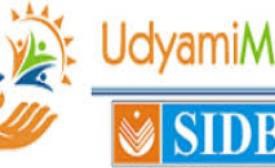
The Small Industries Development Bank of India signed a Memorandum of Understanding with CSC e-Governance Services Pvt Ltd which acts as connect point for various digitally aligned services to villages in India. In its endeavour to be an institutional one stop solution for serving MSMEs who are unserved as well as underserved, SIDBI is spearheading with different schemes and programmes on enterprise. Its digital initiatives, more prominently the www.udyamimitra.in Portal is central to this mission.
MoU is being entered to give programmatic approach to tap young talent from small towns to set up MSEs.
17 - RBI revised reporting norms of Liberalised Remittance Scheme

Liberalised Remittance Scheme (LRS) is under which an individual can transfer up to USD 2,50,000 abroad in a year. Currently, transactions under Liberalised Remittance Scheme (LRS) are being permitted and monitored by AD banks based on the declaration made by the remitter.
In order to improve monitoring and also to ensure compliance with the LRS limits, it was decided that all AD Category-I banks are required to upload daily transaction-wise information or Nil report by accessing XBRL site, so as to prevent fraud.
18 - Government increased NABARD's authorised capital to Rs 300 billion

In order to double the income of farmers by 2022 and increase lending to the rural economy, Lok Sabha passed a Bill to enable exit of the Reserve Bank of India from NABARD and increase the authorised capital to Rs 30000 crore. Government of India raised the authorised capital of NABARD by 6 times to Rs 300 billion. This increase will help NABARD in financing long term irrigation fund and on-lending to cooperative banks.
National Bank for Agriculture and Rural Development is an apex financial institution, in the field of credit for agriculture and other economic activities in rural areas in India.
19 - YES BANK launched YES GST for MSMEs

Yes Bank announced the launch of YES GST, an OD (over draft) facility for Micro, Small and Medium Enterprises. Through this first-of-its-kind, an MSME can avail OD up to Rs. 1 crore, based on their annual turnover, backed by GST returns. Any additional assessment of balance sheet or bank statements will not be required. This OD facility can be availed by a MSME against mortgage of residential or commercial property.
The bank is targeting a disbursement of Rs 1,000 crore through YES GST for financial year 2018-19. YES BANKs total exposure to MSMEs as on March 31, 2018 has crossed Rs 32,500 crore.
20 - Kotak Mahindra Bank became Indias 2nd most valuable bank
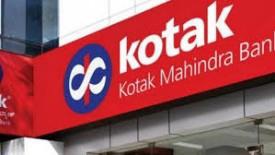
As per the data received from BSE, Kotak Mahindra bank became Indias 2nd most valuable bank with market capitalization of Rs 2.23 trillion Kotak Mahindra bank replaced Indias largest lender State Bank of India (SBI) to become second most valued bank in India. The list was topped by HDFC bank to become most valued bank in India. SBI market capitalization stood at Rs 2.22 trillion whereas HDFC bank market capitalization stood at Rs 5.03 trillion.
Kotak Mahindra Banks shares rose to 1.7% and its market capitalization reached 2.23 trillion.
21 - State Bank of India most trusted bank in India
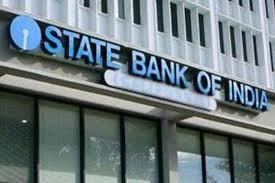
According to a report published by the Brand Finance, State Bank of India is the nations most trustworthy bank with a score of 86.4%. The report highlighted that Indian banks enjoy an average trust score of 69.8% compared to 64.9% recorded by US banks.
The survey was focussed on three big parameters loyalty, trust and popularity. On the trust factor, SBI is followed by HDFC Bank and Central Bank of India whereas on the popularity chart of the survey, it is followed by ICICI Bank and HDFC Bank.
22 - SBI allows cash withdrawal through PoS machines

State Bank of India (SBI) is now providing facilities of cash through Cash@POS initiative. Under this, the debit card holders of SBI and all other banks can withdraw cash from PoS machines installed by SBI across various merchant locations.
Customers in Tier I and Tier II cities can withdraw Rs 1000 while in Tier 3 to Tier 6 cities can withdraw Rs 2000 per day per card. SBI has a total of just over 6 lakh PoS machines of which nearly 5 lakh PoS machines are enabled to dispense cash to its customers.
23 - IOB inks information utility pact with NeSL
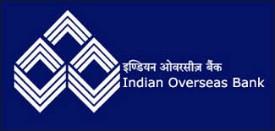
Indian Overseas Bank (IOB) has entered into an agreement for information utility services with the National E-Governance Services Limited (NeSL). With this agreement, the IOB branches will be able to provide high-quality, authenticated information about debts and defaults; which will have more transparency in maintaining the list of borrowers, debtors, creditors and loan defaulters.
The NeSL became India's first information utility (IU) for bankruptcy cases under the 'Insolvency and Bankruptcy Code (IBC) 2016' in October 2017.
24 - India highest recipient of remittances in 2017
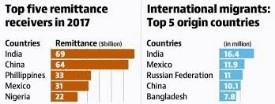
According to World Bank, India topped as the highest recipient of remittances globally in 2017. Indians residing abroad sent back $69 billion. The second in the list was China with $64 billion followed by Philippines ($33 billion), Mexico ($31 billion), Nigeria ($22 billion), and Egypt ($20 billion).
India had received $70.4 billion in 2014. Global remittances, which include flows to high-income countries, grew 7% to $613 billion in 2017.
25 - BoI signed agreement with NeSL to share Data under Insolvency Rules
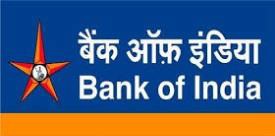
Bank of India has entered into an agreement with National E-Governance Services (NeSL) for information utility (IU) arrangement under the Insolvency and Bankruptcy Code (IBC). As per the agreement, BoI will avail NeSL service to expedite corporate insolvency resolution process.
In September 2017, the Insolvency and Bankruptcy Board of India (IBBI) registered NeSL as the first IU. IU is proposed to offer services for accepting electronic submission of financial information.
26 - RBI restricted banks on giving services to businesses dealing in virtual currencies
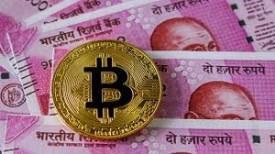
The Reserve Bank of India instructed all the financial institutions to stop providing services to any individual or business entities dealing with virtual currencies whereas regulated entities which already provide such services shall exit the relationship. Virtual Currencies (VCs), also variously referred to as crypto currencies and crypto assets, raise concerns of consumer protection, market integrity and money laundering.
Reserve Bank has repeatedly cautioned users, holders and traders of virtual currencies, including Bitcoins, regarding various risks associated in dealing with such virtual currencies.
27 - NITI Aayog predicted economic growth likely to hit 7.5% in 2018-19
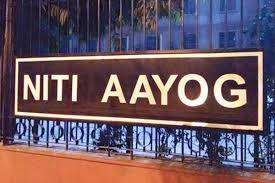
Niti Aayog predicted India's economy to grow by at least 7.5% in 2018-19 on the back of improvement in investment cycle and capacity utilisation. The economy is expected to grow at 6.6 per cent in 2017-18. More than 45 % exports in covered by SME sector and the importance of this sector can never be undermined. Two main objectives of the NITI Aayog are creating more jobs and providing a boost to export.
Gross domestic product is a monetary measure of the market value of all final goods and services produced in a period (quarterly or yearly) of time.
28 - India Index Services & Products Limited launched Nifty equity savings index
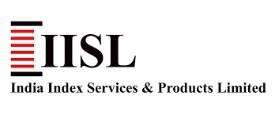
National Stock Exchange's (NSEs) arm India Index Services & Products Ltd (IISL) launched Nifty equity savings index. The NIFTY Equity Savings Index will serve as a benchmark for the equity savings funds offered by various mutual funds. Nifty equity savings index will capture performance of a portfolio having exposure to equity, equity arbitrage and debt instruments. This index is a total return index capturing price return and dividend/coupon income.
India Index Services and Products Ltd, a subsidiary of the NSE, manages a portfolio of 67 indices under NIFTY brand.
29 - Fitch retained Indias sovereign rating at BBB- with stable outlook
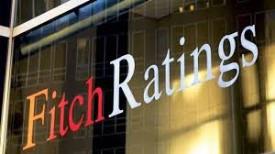
Global credit rating agency Fitch kept Indias sovereign rating unchanged at BBB- with stable outlook. This rating means lowest investment grade with stable outlook. In other words, medium-term growth potential of India is strong. Indias growth rate was projected at 7.3% in 2018-19 and further to 7.5% in 2019-20.
Fitchs analysis as the stable outlook covers upside and downside risks. According to Fitch, Indias ratings are broadly balanced. Fitch Ratings Inc. is one of the "Big Three credit rating agencies", the other two being Moody's and Standard & Poor's.